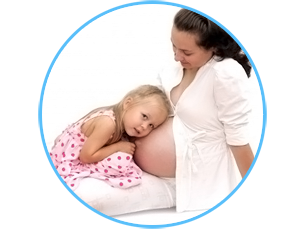Gynecological Solution |
| |
- Excessive menstruation bleeding
- Painful menstrual bleeding
- Irregular menstrual bleeding
- Pelvic infections
- Endometriosis / Endometriotic (chocolate cyst)
- Polycystic ovarian diseases (PCOD)
- Ovarian Cyst
- Fibroid uterus
- Tubal pathology like hydrosalpinx
- Adenomyosis
- Uterine (Endometrial malignancy)
- Cervical malignancy
- Ovarian malignancy
|
 |
|
| |
| |
Pregnancy Solution |
| |
- Pregnancy Counseling
- Contraception
- Antenatal Care
- Antenatal Physiotherapy Work Up
- Antenatal diet formulations
- High Risk Pregnancy
|
 |
|
| |
| |
Delivery Solution |
| |
- Vaginal Delivery
- Normal Delivery
- Painless Normal Delivery
- Abortion Clinic
|
 |
|
| |
| |
Adolescent (Teenage) Problem |
| |
- Menstrual Problem
- Polycystic Ovary
- Unwanted Pregnancy
- Contraception
|
 |
|
| |
| |
Hysterectomy |
| |
A hysterectomy is an operation to remove a woman's uterus. A woman may have a hysterectomy for different reasons, including: |
|
| |
- Uterine fibroids that cause pain, bleeding, or other problems
- Uterine prolapse, which is a sliding of the uterus from its normal position into the vaginal canal
- Cancer of the uterus, cervix, or ovaries
- Endometriosis
- Abnormal vaginal bleeding
- Chronic pelvic pain
- Adenomyosis, or a thickening of the uterus
|
 |
|
| |
| |
Infertility |
| |
Infertility means not being able to get pregnant after one year of trying (or six months if a woman is 35 or older). Women who can get pregnant but are unable to stay pregnant may also be infertile. |
|
| |
|
Pregnancy is the result of a process that has many steps. To get pregnant :
- A woman's body must release an egg from one of her ovaries (ovulation).
- The egg must go through a fallopian tube toward the uterus (womb).
- A man's sperm must join with (fertilize) the egg along the way.
- The fertilized egg must attach to the inside of the uterus (implantation).
|
 |
|
| |
| |